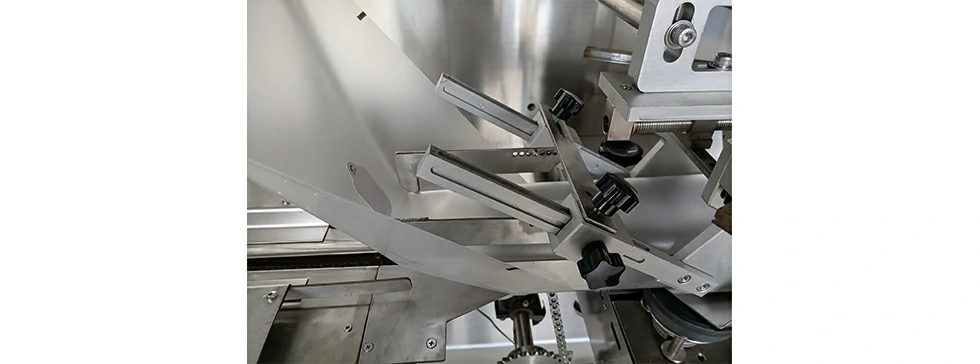The non-woven disposable wet wipes machine’s lid application process may vary depending on the packaging material used, such as plastic or cardboard.
Here’s an overview of how the machine might handle lid application for different packaging materials:
- Plastic Packaging:
- For plastic containers, the lid application process involves similar mechanisms as discussed earlier for plastic lids. The machine is equipped to handle the specific shape, size, and material of the plastic container and cap lids onto them accordingly.
- The lid applicator ensures accurate lid placement and secure sealing onto the plastic containers using suitable capping mechanisms.
- Cardboard or Paper-Based Packaging:
- Cardboard or paper-based packaging might require a different approach. Instead of directly capping lids onto these materials, the machine might use an alternate sealing method.
- For cardboard or paper-based containers, the machine could apply peel-off or self-adhesive lids. These lids might have an adhesive backing that adheres to the cardboard/paper surface, providing a seal without the need for traditional capping mechanisms.
- Adaptability and Customization:
- Modern wet wipes machines often feature customizable settings and adaptable mechanisms to accommodate various packaging materials.
- Adjustable settings for lid application and sealing methods allow the machine to switch between different packaging materials, ensuring efficient and accurate lid application regardless of the material.
- Additional Considerations:
- The machine might have specific modules or components designed for different packaging materials. For example, adhesive application systems might differ based on whether the lids are applied to plastic or cardboard containers.
- Quality checks and sensors integrated into the machine might be calibrated differently to ensure proper lid application and sealing for different packaging materials.
In summary, the non-woven disposable wet wipes machine can handle lid application for different packaging materials by utilizing adaptable mechanisms, customizable settings, and specific modules designed to suit various materials’ requirements. The machine’s flexibility allows it to efficiently cap lids onto plastic or cardboard containers using appropriate methods for each material type.
How does the non woven disposable wet wipes machine feeding and placement for continuous production?
In a non-woven disposable wet wipes machine, continuous feeding and placement mechanisms are crucial for uninterrupted production.
Here’s how the machine manages feeding and placement for continuous production:
- Material Feeding Systems: The machine is equipped with systems designed to continuously feed non-woven fabric rolls or sheets, which are the primary material for wet wipes production. These feeding systems ensure a steady supply of material to the production line.
- Unwinding and Tension Control: Non-woven fabric rolls are unwound and fed into the machine. Tension control mechanisms maintain consistent tension on the material to prevent wrinkles, tears, or misfeeds, ensuring smooth and continuous processing.
- Cutting and Folding: The machine’s cutting and folding mechanisms automatically cut the non-woven fabric into individual wipes of the desired size and shape. non woven disposable wet wipes machine This continuous process enables the production of multiple wipes simultaneously.
- Solution Application: If the wet wipes require wetting with a solution, automated systems apply the liquid continuously onto the non-woven fabric in a consistent and controlled manner across the production line.
- Packaging Integration: As the wipes are produced continuously, they move seamlessly into the packaging phase. Packaging machinery integrates with the production line, receiving the wipes in a continuous stream for further processing into final packaging units.
- Conveyor Systems: Conveyor belts or systems transport the wipes through the various stages of production, ensuring a continuous flow from cutting and wetting to folding and packaging.
- Automation and Control: The entire process is automated and controlled by a central system that synchronizes the various components and stages of the production line. Sensors and control mechanisms regulate speed, alignment, and quality control for continuous operation.
- Capacity and Scalability: Machines are designed to handle high capacities and can be scaled according to production demands. This scalability allows for adjustments in production rates without compromising continuous operation.
- Monitoring and Maintenance: Regular monitoring of the machine’s performance and scheduled maintenance sessions prevent breakdowns, ensuring continuous and uninterrupted production.
By incorporating these continuous feeding, processing, and automation mechanisms, non-woven disposable wet wipes machines can maintain a continuous and efficient production flow, meeting the demand for high-quality wet wipes in a seamless manner.
